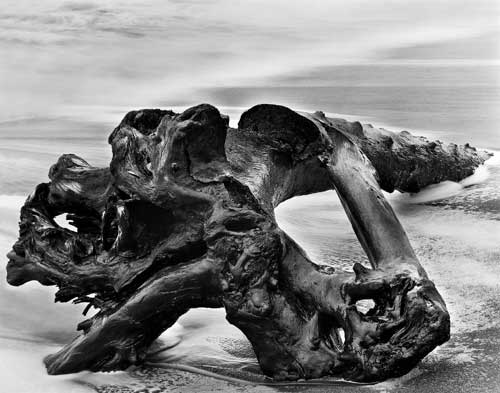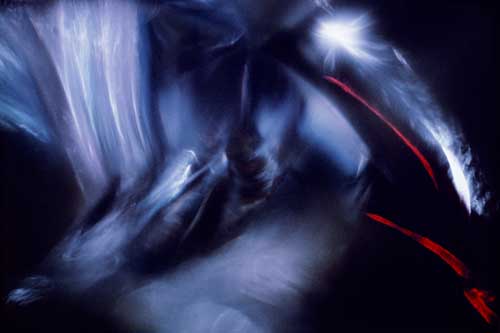
Driftwood, 1951 © 1951/2012 Bullock Family Photography LLC. All Rights Reserved. |
|
Wynn Bullock (1902-1975) was born in Chicago and raised in South Pasadena, California. His boyhood passions were athletics and singing. The latter became his first career, and it was not until he was giving concerts in Europe in the mid-1920s that he became intrigued with the visual arts. He bought himself a simple box camera and began taking pictures. Photography remained a hobby, however, until 1938 when he enrolled in the Los Angeles Art Center School. There he concentrated his efforts in experimental imagery. Three years later, his work was showcased in one of the early solo photography exhibitions at the L.A. County Museum of Art. Shortly after World War II, Wynn moved his family to the Monterey Peninsula where he had obtained the photographic concession at Fort Ord. Although Wynn earned a good living as a commercial photographer, it was in his personal work that he found his greatest fulfillment. A major turning point in Wynn's life as a creative photographer occurred in 1948 when he met Edward Weston and began to explore "straight" photography for himself. Throughout the decade of the 50s, Wynn devoted himself to developing his own vision, establishing deep, direct connections with nature in and around the Central Coast of California. A lifelong learner, he also read widely in the areas of physics, General Semantics, philosophy, psychology, eastern religion, and art. Studying the work of such people as Albert Einstein, Lao Tzu, and Paul Klee, he kept evolving his own dynamic system of principles and concepts that both reflected and nurtured his creative journey. In the mid-1950s, two of his photographs were included in the famous Family of Man exhibition and his reputation as a master photographer spread worldwide. Between 1959 and 1965, Wynn departed from black and white imagery and produced a body of work he referred to as "color light abstractions." For him, these photographs represented an in-depth exploration of light, manifesting his belief that light is a great force at the heart of all being, "perhaps," as he said, "the most profound truth in the universe." By the mid-60s, Wynn was ready to explore the mysteries of light and life from new perspectives. Developing the means to visually manifest the dynamic qualities of time through long time exposures and multiple images became a key aspect of his work. This was followed be a relatively brief period of imagery similar in feeling and power to the quiet essence of Haiku poetry. At the end of the 1960s, Wynn embarked on what was to become the last leg of his creative journey. Although he included upside-down and negative printing in his repertoire of techniques, it was not their unusual effects that interested him. What was important was how they served to symbolize new ways of relating to and knowing the world. Many of his abstract photographs from this period reveal light emanating from within the heart of things, life glowing and pulsing with energy and vitality. Other photographs are of natural forms that depict or suggest universal human qualities, humanity "deeply embedded in" and one with nature. Shortly before his death in 1975, Wynn became one of the five founding artists whose archives established the University of Arizona's Center for Creative Photography. The second major repository of Wynn's work may be found at the University of California, Santa Cruz, where The Bullock Family Photography Archive is becoming a core element of the University Library's outstanding Special Collections and Archives Program. This Archive celebrates not only Wynn's creative legacy, but also that of his wife Edna who enjoyed a 20-year career as a fine art photographer after Wynn's death in 1975. Wynn Bullock web site |

Wynn Bullock, Color Light Abstraction 1006, 1961 © 1961/2012 Bullock Family Photography LLC. All Rights Reserved. |
installation -- December 4-29, 2012
gallery talk -- Friday, December 14, 6pm